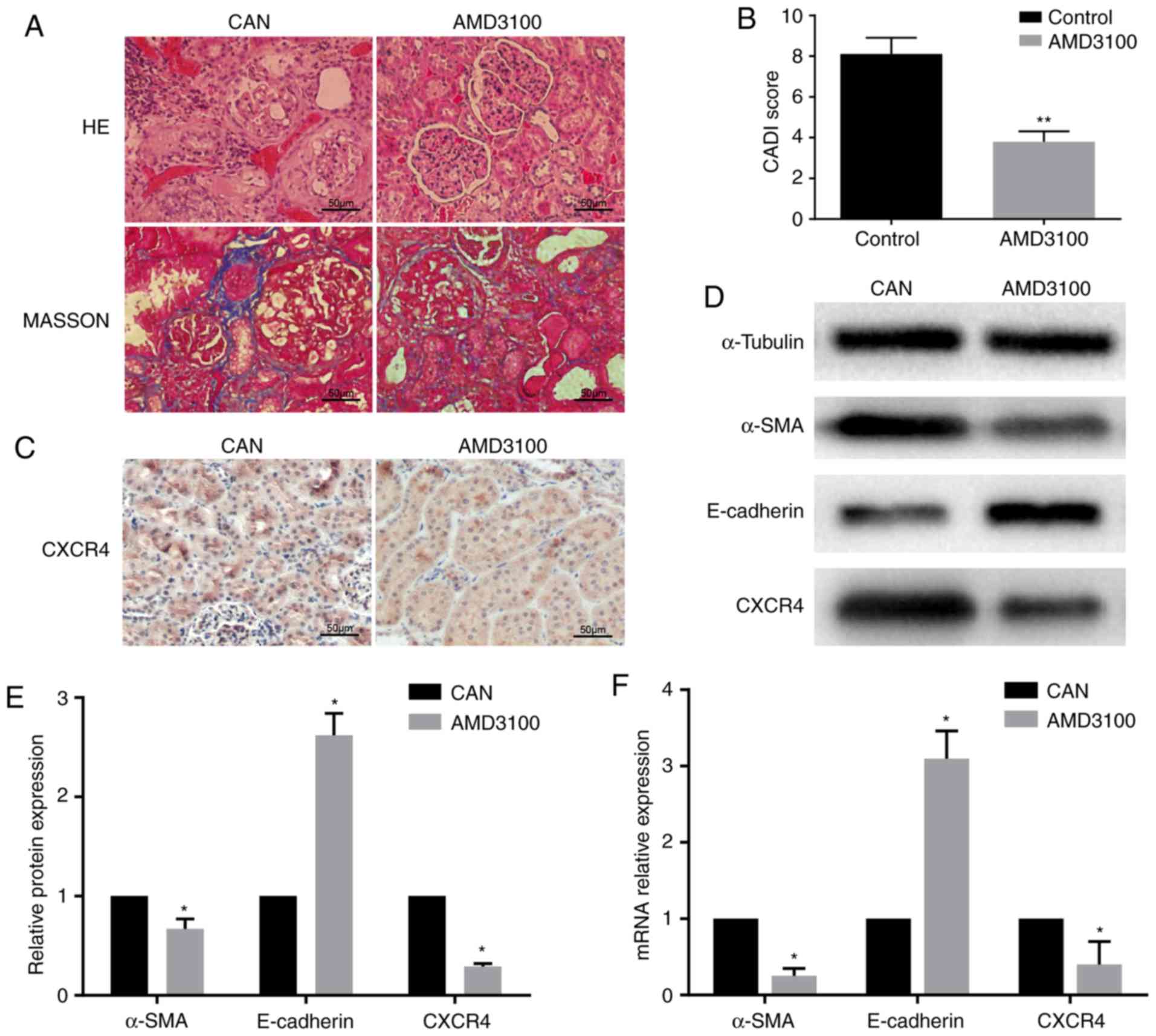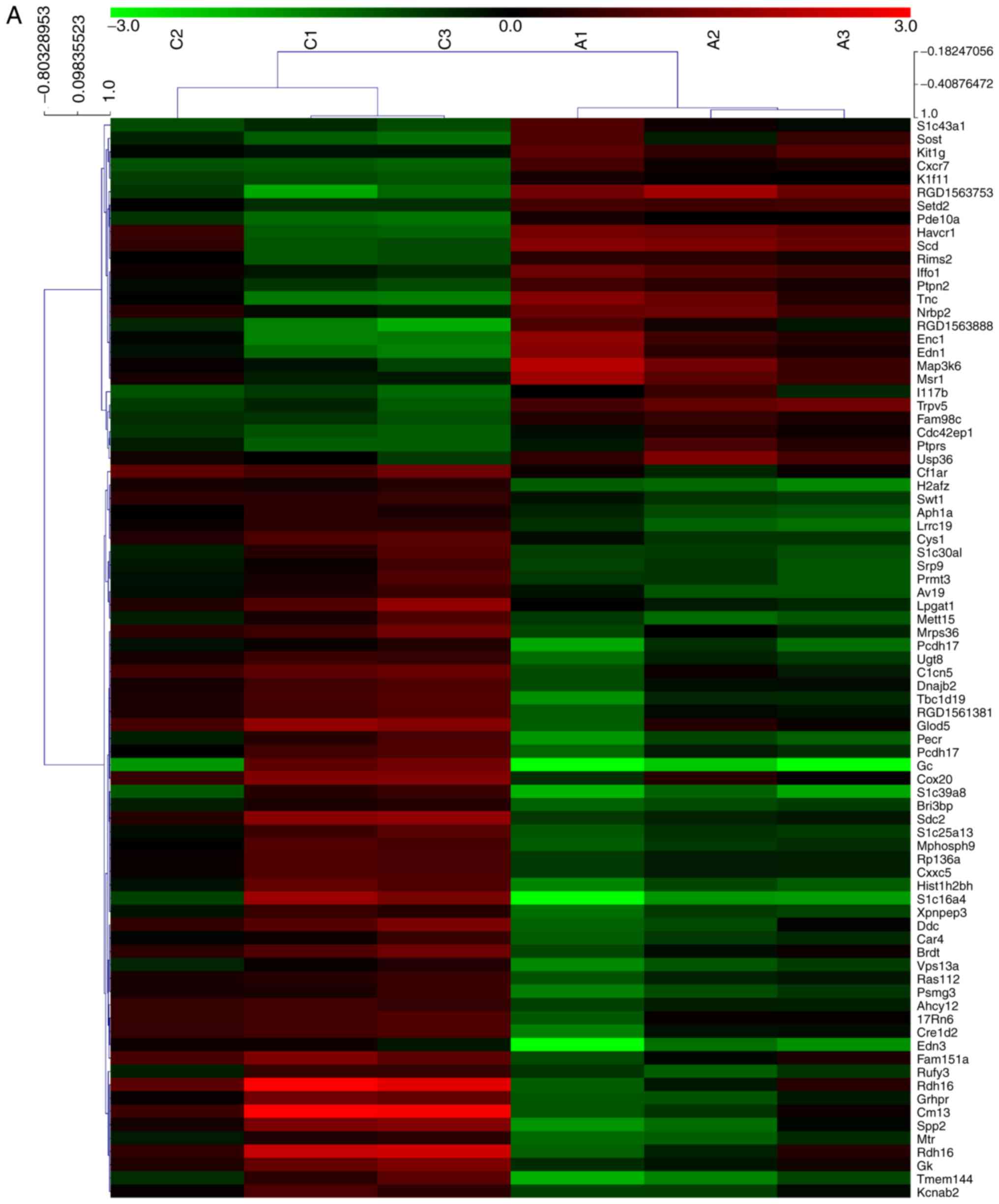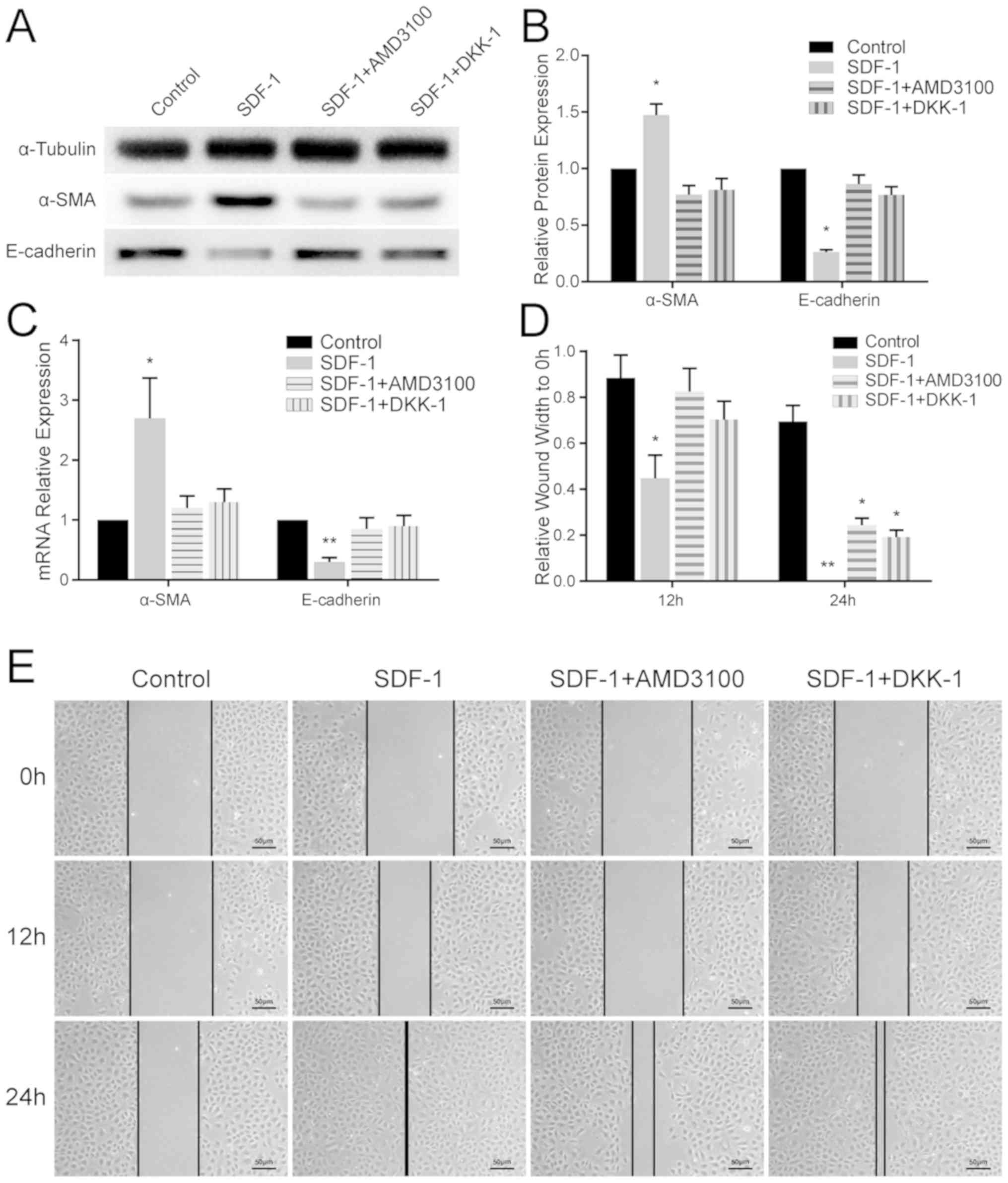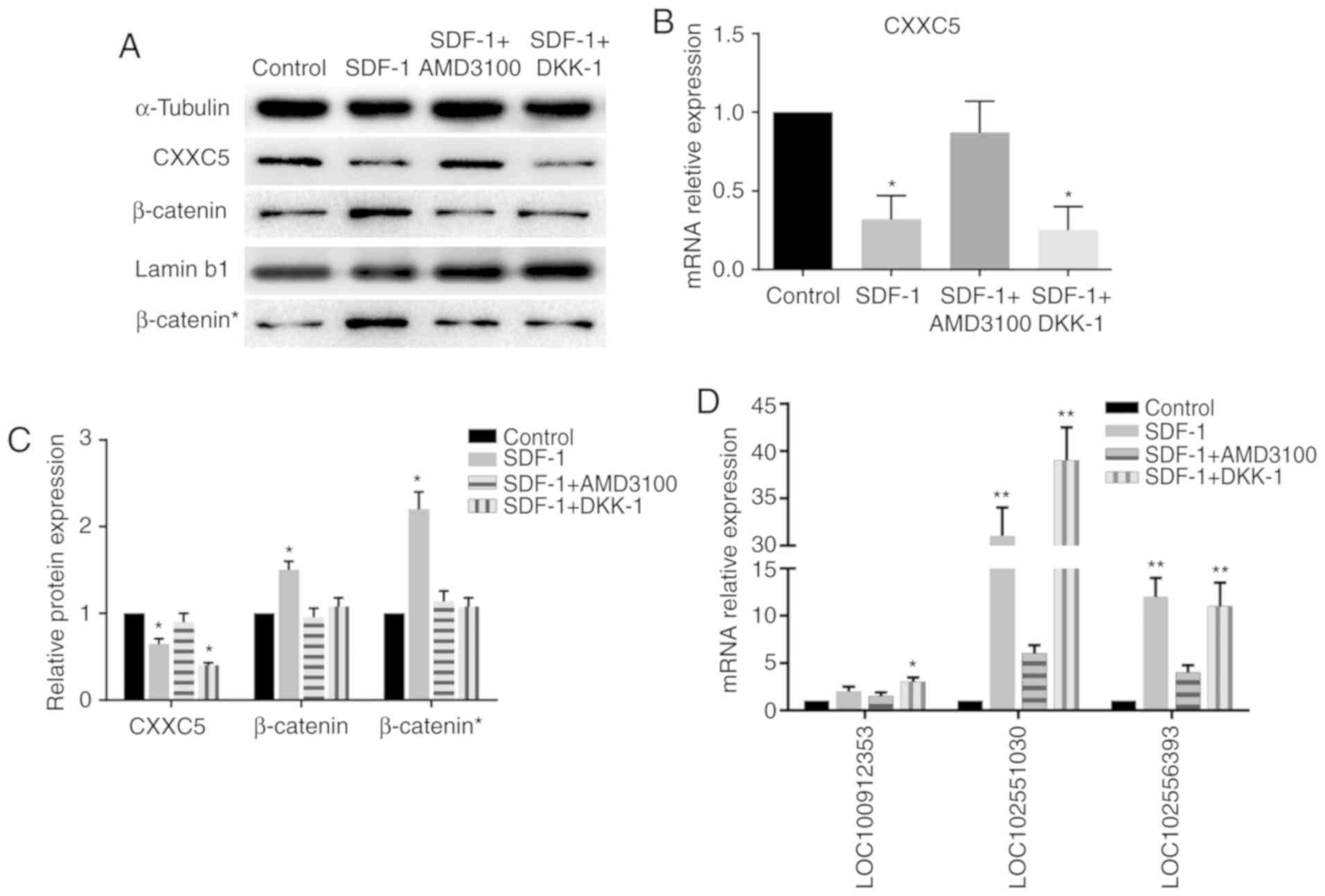|
1
|
Lamb KE, Lodhi S and Meier-Kriesche HU:
Long-term renal allograft survival in the United States: A critical
reappraisal. Am J Transplant. 11:450–462. 2011. View Article : Google Scholar : PubMed/NCBI
|
|
2
|
Gatault P, Bertrand D, Büchler M, Colosio
C, Hurault de Ligny B, Weestel PF, Rerolle JP, Thierry A, Sayegh J,
Moulin B, et al: Eight-year results of the Spiesser study, a
randomized trial comparing de novo sirolimus and cyclosporine in
renal transplantation. Transpl Int. 29:41–50. 2016. View Article : Google Scholar : PubMed/NCBI
|
|
3
|
Solez K, Colvin RB, Racusen LC, Sis B,
Halloran PF, Birk PE, Campbell PM, Cascalho M, Collins AB, Demetris
AJ, et al: Banff '05 Meeting Report: Differential diagnosis of
chronic allograft injury and elimination of chronic allograft
nephropathy (‘CAN’). Am J Transplant. 7:518–526. 2007. View Article : Google Scholar : PubMed/NCBI
|
|
4
|
Hara S: Banff 2013 update: Pearls and
pitfalls in transplant renal pathology. Nephrology (Carlton). 20
(Suppl):S2–S8. 2015. View Article : Google Scholar
|
|
5
|
Mannon RB: Therapeutic targets in the
treatment of allograft fibrosis. Am J Transplant. 6:867–875. 2006.
View Article : Google Scholar : PubMed/NCBI
|
|
6
|
Takabatake Y, Sugiyama T, Koharah,
Matsusaka T, Kurihara H, Koni PA, Nagasawa Y, Hamano T, Matsui I,
Kawada N, et al: The CXCL12 (SDF-1)/CXCR4 axis is essential for the
development of renal vasculature. J Am Soc Nephrol. 20:1714–1723.
2009. View Article : Google Scholar : PubMed/NCBI
|
|
7
|
Ge G, Zhang H, Li R and Liu H: The
function of SDF-1-CXCR4 axis in SP cells-mediated protective role
for renal ischemia/reperfusion injury by SHH/GLI1-ABCG2 pathway.
Shock. 47:251–259. 2017. View Article : Google Scholar : PubMed/NCBI
|
|
8
|
Xu Y, Zhang Q, Xue W, Zeng S, Zhang Z,
Zhang X and Hu X: CXC chemokine receptor 4 (CXCR4) antagonist, a
novel pathway to prevent chronic allograft nephropathy. Ann
Transplant. 21:728–734. 2016. View Article : Google Scholar : PubMed/NCBI
|
|
9
|
Hu X, Okabayashi T, Cameron AM, Wang Y,
Hisada M, Li J, Raccusen LC, Zheng Q, Montgomery RA, Williams GM
and Sun Z: Chimeric allografts induced by short-term treatment with
stem cell-mobilizing agents result in long-term kidney transplant
survival without immunosuppression: A study in rats. Am J
Transplant. 16:2055–2065. 2016. View Article : Google Scholar : PubMed/NCBI
|
|
10
|
Cameron AM, Wesson RN, Ahmadi AR, Singer
AL, Hu X, Okabayashi T, Wang Y, Shigoka M, Fu Y, Gao W, et al:
Chimeric allografts induced by short-term treatment with stem cell
mobilizing agents result in long-term kidney transplant survival
without immunosuppression: II, study in miniature swine. Am J
Transplant. 16:2066–2076. 2016. View Article : Google Scholar : PubMed/NCBI
|
|
11
|
Zou XF, Gu JH, Cui ZL, Lu YW and Gu C: CXC
chemokine receptor type 4 antagonism ameliorated allograft fibrosis
in rat kidney transplant model. Exp Clin Transplant. 15:448–452.
2017.PubMed/NCBI
|
|
12
|
Aversa I, Zolea F, Ieranò C, Bulotta S,
Trotta AM, Faniello MC, De Marco C, Malanga D, Biamonte F,
Viglietto G, et al: Epithelial-to-mesenchymal transition in
FHC-silenced cells: The role of CXCR4/CXCL12 axis. J Exp Clin
Cancer Res. 36:1042017. View Article : Google Scholar : PubMed/NCBI
|
|
13
|
He G, Ma M, Yang W, Wang H, Zhang Y and
Gao MQ: SDF-1 in mammary fibroblasts of bovine with mastitis
induces EMT and inflammatory response of epithelial cells. Int J
Biol Sci. 13:604–614. 2017. View Article : Google Scholar : PubMed/NCBI
|
|
14
|
Wu CH, Song JS, Chang KH, Jan JJ, Chen CT,
Chou MC, Yeh KC, Wong YC, Tseng CT, Wu SH, et al: Stem cell
mobilizers targeting chemokine receptor CXCR4: Renoprotective
application in acute kidney injury. J Med Chem. 58:2315–2325. 2015.
View Article : Google Scholar : PubMed/NCBI
|
|
15
|
Yuan A, Lee Y, Choi U, Moeckel G and
Karihaloo A: Chemokine receptor Cxcr4 contributes to kidney
fibrosis via multiple effectors. Am J Physiol Renal Physiol.
308:F459–F472. 2015. View Article : Google Scholar : PubMed/NCBI
|
|
16
|
von Toerne C, Schmidt C, Adams J, Kiss E,
Bedke J, Porubsky S, Gretz N, Lindenmeyer MT, Cohen CD, Gröne HJ
and Nelson PJ: Wnt pathway regulation in chronic renal allograft
damage. Am J Transplant. 9:2223–2239. 2009. View Article : Google Scholar : PubMed/NCBI
|
|
17
|
Hu TH, Yao Y, Yu S, Han LL, Wang WJ, Guo
H, Tian T, Ruan ZP, Kang XM, Wang J, et al: SDF-1/CXCR4 promotes
epithelial-mesenchymal transition and progression of colorectal
cancer by activation of the Wnt/beta-catenin signaling pathway.
Cancer Lett. 354:417–426. 2014. View Article : Google Scholar : PubMed/NCBI
|
|
18
|
Shan S, Lv Q, Zhao Y, Liu C, Sun Y, Xi K,
Xiao J and Li C: Wnt/beta-catenin pathway is required for
epithelial to mesenchymal transition in CXCL12 over expressed
breast cancer cells. Int J Clin Exp Pathol. 8:12357–12367.
2015.PubMed/NCBI
|
|
19
|
Council NR, . Guide for the care and use
of laboratory animals. Eighth. The National Academies Press;
Washington, DC: 2011
|
|
20
|
Kahu J, Kyllonen L, Raisanen-Sokolowski A
and Salmela K: Donor risk score and baseline biopsy CADI value
predict kidney graft outcome. Clin Transplant. 25:E276–E283. 2011.
View Article : Google Scholar : PubMed/NCBI
|
|
21
|
Livak KJ and Schmittgen TD: Analysis of
relative gene expression data using real-time quantitative PCR and
the 2(-Delta Delta C(T)) method. Methods. 25:402–408. 2001.
View Article : Google Scholar : PubMed/NCBI
|
|
22
|
Shi J, Li F, Luo M, Wei J and Liu X:
Distinct roles of Wnt/beta-catenin signaling in the pathogenesis of
chronic obstructive pulmonary disease and idiopathic pulmonary
fibrosis. Mediators Inflamm. 2017:35205812017. View Article : Google Scholar : PubMed/NCBI
|
|
23
|
Sanchez-Duffhues G, Garcia de Vinuesa A
and Ten Dijke P: Endothelial-to-mesenchymal transition in
cardiovascular diseases: Developmental signaling pathways gone
awry. Dev Dyn. 247:492–508. 2018. View Article : Google Scholar : PubMed/NCBI
|
|
24
|
Lin MF, Jungreis I and Kellis M: PhyloCSF:
A comparative genomics method to distinguish protein coding and
non-coding regions. Bioinformatics. 27:i275–i282. 2011. View Article : Google Scholar : PubMed/NCBI
|
|
25
|
Sun X, Cheng G, Hao M, Zheng J, Zhou X,
Zhang J, Taichman RS, Pienta KJ and Wang J: CXCL12/CXCR4/CXCR7
chemokine axis and cancer progression. Cancer Metastasis Rev.
29:709–722. 2010. View Article : Google Scholar : PubMed/NCBI
|
|
26
|
Zuk A, Gershenovich M, Ivanova Y,
MacFarland RT, Fricker SP and Ledbetter S: CXCR(4)antagonism as a
therapeutic approach to prevent acute kidney injury. Am J Physiol
Renal Physiol. 307:F783–F797. 2014. View Article : Google Scholar : PubMed/NCBI
|
|
27
|
Xia R, Xu G, Huang Y, Sheng X, Xu X and Lu
H: Hesperidin suppresses the migration and invasion of non-small
cell lung cancer cells by inhibiting the SDF-1/CXCR-4 pathway. Life
Sci. 201:111–120. 2018. View Article : Google Scholar : PubMed/NCBI
|
|
28
|
Taoh, Yang JJ, Shi KH and Li J: Wnt
signaling pathway in cardiac fibrosis: New insights and directions.
Metabolism. 65:30–40. 2016. View Article : Google Scholar : PubMed/NCBI
|
|
29
|
Luo K, Gu X, Liu J, Zeng G, Peng L, Huang
H, Jiang M, Yang P, Li M, Yang Y, et al: Inhibition of disheveled-2
resensitizes cisplatin-resistant lung cancer cells through
down-regulating Wnt/beta-catenin signaling. Exp Cell Res.
347:105–113. 2016. View Article : Google Scholar : PubMed/NCBI
|
|
30
|
Gilles C, Polette M, Mestdagt M,
Nawrocki-Raby B, Ruggeri P, Birembaut P and Foidart JM:
Transactivation of vimentin by beta-catenin in human breast cancer
cells. Cancer Res. 63:2658–2664. 2003.PubMed/NCBI
|
|
31
|
Wong SHM, Fang CM, Chuah LH, Leong CO and
Ngai SC: E-cadherin: Its dysregulation in carcinogenesis and
clinical implications. Crit Rev Oncol Hematol. 121:11–22. 2018.
View Article : Google Scholar : PubMed/NCBI
|
|
32
|
Andersson T, Sodersten E, Duckworth JK,
Cascante A, Fritz N, Sacchetti P, Cervenka I, Bryja V and Hermanson
O: CXXC5 is a novel BMP4-regulated modulator of Wnt signaling in
neural stem cells. J Biol Chem. 284:3672–3681. 2009. View Article : Google Scholar : PubMed/NCBI
|
|
33
|
Kim HY, Yoon JY, Yun JH, Cho KW, Lee SH,
Rhee YM, Jung HS, Lim HJ, Lee H, Choi J, et al: CXXC5 is a
negative-feedback regulator of the Wnt/beta-catenin pathway
involved in osteoblast differentiation. Cell Death Differ.
22:912–920. 2015. View Article : Google Scholar : PubMed/NCBI
|
|
34
|
Lee SH, Kim MY, Kim HY, Lee YM, Kim H, Nam
KA, Roh MR, Min Do S, Chung KY and Choi KY: The dishevelled-binding
protein CXXC5 negatively regulates cutaneous wound healing. J Exp
Med. 212:1061–1080. 2015. View Article : Google Scholar : PubMed/NCBI
|
|
35
|
Lee SH, Seo SH, Lee DH, Pi LQ, Lee WS and
Choi KY: Targeting of CXXC5 by a competing peptide stimulates hair
regrowth and wound-induced hair neogenesis. J Invest Dermatol.
137:2260–2269. 2017. View Article : Google Scholar : PubMed/NCBI
|
|
36
|
Ma S, Choi J, Jin X, Kim HY, Yun JH, Lee
W, Choi KY and No KT: Discovery of a small-molecule inhibitor of
Dvl-CXXC5 interaction by computational approaches. J Comput Aided
Mol Des. 32:643–655. 2018. View Article : Google Scholar : PubMed/NCBI
|













